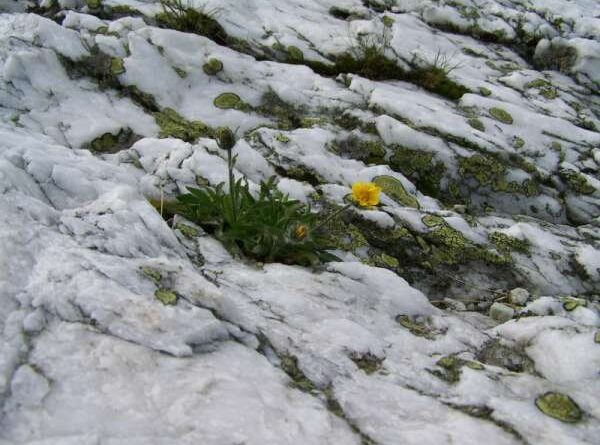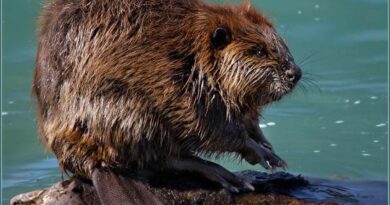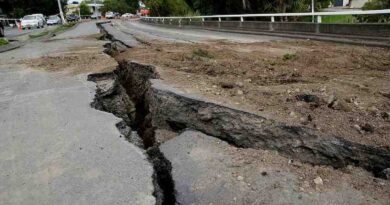Plants in Polar Region Climate Survival in Extreme Conditions
In the frozen deserts of the polar area, life is governed by the longest days and nights, the coldest temperatures, and some of the strongest winds on the world.
The most crucial single ingredient permitting life on earth is the light and heat produced by the sun. Without light, and at least brief periods of warmth, only the simplest plants can grow and no cold-blooded animals can survive. Day and night nights can be extraordinarily long in the polar areas (each lasting six months at the poles themselves). Throughout the polar zones, the summer is a season of plentiful light, and the winter is a time of relatively little light.
Impact of Solar Radiation in Winter and Effects of Ice and Snow on Polar Regions
Any solar radiation in the winter is of limited warmth due to low sun position; its rays lose more energy when they pass through the atmosphere than when they are hit at a greater angle by Earth. In addition, ice and snow are highly reflective, and 90 per cent of the solar radiation hitting the polar surface in any season is thrown back into space. The warming impact is minimal, especially in the short winter days. Snow on land and ice at sea unexpectedly shut off the supply of light and growth in winter. Although buried beneath several feet of snow, neither land plants nor phytoplankton (the life-giving substance of the ocean) can grow or multiply. The snow layer on land has only one advantage: it provides some insulation against low air temperatures. If these happen, they can be very serious. The lowest temperature in central Antarctica is 88°C (-26°F).
Deserts cover a substantial amount of the high polar areas. Only five inches of rain fall each year in the central Arctic basin and the Antarctic plateau. Some sections of inland Antarctica are so dry that there is no snow or ice there. A salt-coated sand blankets the soil, and there are no bacteria to speak of.
This broad image of drought may seem to contradict the vivid descriptions of persistent blizzards told by early explorers, but the wind, another significant force, explains the oddity. Cold winds cascade off the Antarctic plateau at up to 100 mph, blowing snow across the land surface. In many Antarctic blizzards, drifting snow predominates over actual snowfall.
By comparison, the centre of the continent is comparatively calm under the influence of a protracted high-pressure system. Similar conditions persist in the north. Winds are particularly fierce in Alaska and Scandinavia, while Canada and central Siberia, despite the region’s extreme cold, enjoy more stable conditions.
Warmer, saltier seas replace the cold, icy waters of the Antarctic Convergence, giving rise to a totally new ecosystem of plants and animals in this part of the world. The ice shelves that border the Ross and Weddell Seas and other regions are permanent. Some of these large pieces of ice, like the Ross ice shelf, which is 1000 feet thick, don’t have any Arctic analogues.
Plant and animal species are expanding their ranges.
In summer, the Arctic land areas warm up significantly more than the same latitudes in Antarctica, where the core ice sheet cools its entire environs. Antarctica’s summer temperatures rarely exceed more than a few degrees above freezing, even around the continent’s coasts.
However, these are reported shade temperatures, but plants and animals on the ground are not shaded. An exposed patch of moss or soil can quickly achieve temperatures of 10 to 15 degrees Celsius (50 to 59 degrees Fahrenheit) on a warm, bright day in the summer. By absorbing the sun’s warming energy, plants and animals can experience a more favourable climate than air temperatures suggest. In winter, on the other hand, they would lose heat to the cold air if they were not sheltered by an insulating blanket of snow.
Only hibernating warm-blooded animals benefit from this protective environment. For those that remain active, the biggest threat is not cold alone, but wind and cold combined—wind-chill. This is a killer: 50 ‘C (-58°F) in calm is significantly less of a concern than 20 ‘C (-4°F) supported by a continuous 10 mph wind. Soils on the 4 percent of Antarctica that is not covered by permanent ice are largely mineral debris left behind by retreating glaciers. Only a few centimetres of the frozen surface thaws in the summer, allowing only bacteria, fungi, and other microscopic animals to survive. On the warmer beaches, the soil is constantly frozen below 2-3 ft, but surface water helps to the growth of moss mats that can eventually build up into 5-6 ft thick layers of peat.
Warmer summers in the Arctic allow the soils to melt and a wider range of plants to grow. Permafrost, a 200-foot-deep, permanently frozen layer beneath the surface, prevents melted ice from draining away. The result is enormous expanses of moss-filled bogs and marshes, termed muskeg.
Antarctic plants All polar plants are adapted to their ecosystem by being compact, wind-resistant, and able to tolerate the unstable soil. Some are rooted by deep tap-roots; others form a flexible cushion of interlaced threads. There are roughly 400 different species of lichen that grow on the cliffs and boulder faces of Antarctica’s inland ranges as thin crusts or dispersed tufts. It’s possible that a few species have made it through the ice age. The only other plants in the interior are fungi, bacteria, and algae. Around 75 mosses and at least 20 liverworts cover the stony flats and the glacial stream margins along the coast, where growth is more luxuriant. Shown above are lichens and cushion-forming mosses on boulders in the South Graphed on exposed sea cliffs on Adelaide Island, off the Antarctic Peninsula. A little grass and a hardly noticeable green cushion plant are the only two flowering plants in the entire Antarctic region. Both grow low down in sunny, north-facing gullies, where the soil is more mature and there is some cover from southerly gales. In the same coastal areas exist two species of midge—the largest Antarctic animals that do not depend on the sea for feeding. In the interior, approximately 100 miles from the Pole, small mites dwelling on bacteria and fungi have been found.
Arctic flowers Both polar zones include an abundance of rock-encrusting lichens (centre right), but because the Arctic is warmer, latitude for latitude, flowering plants penetrate far farther towards the North Pole than towards the South Pole. It is in the tundra (the sub-polar zone for which the Antarctic has no analogue) that Arctic flora reaches its height of development. More than a thousand mosses and lichens, as well as 800,000 species of blooming plants, are supported by the area’s abundance of surface water and long summer days. A famous lichen is the so-called reindeer moss, which may grow into a 6 in. deep carpet. Flowers such as the Arctic poppy, with its insulated hairy stems, and the moss campion (centre left), a ground-hugging cushion, bring a splash of colour to the Arctic spring. Polar plants are tuned to flowering and fruiting only when exposed to the long polar days, and they will not seed in temperate environments. Runners or tiny bulbs dispersed by the wind are the only means of reproduction for a number of plants that formerly relied on seeds. Some Arctic plants supply food for animals, such as the Arctic fritillary, Clossiana frigga, which is found in Scandinavia. Insect life is profuse in the Arctic, particularly in the tundra. Mosquitoes and beetles are common, as are many different types of flies.



